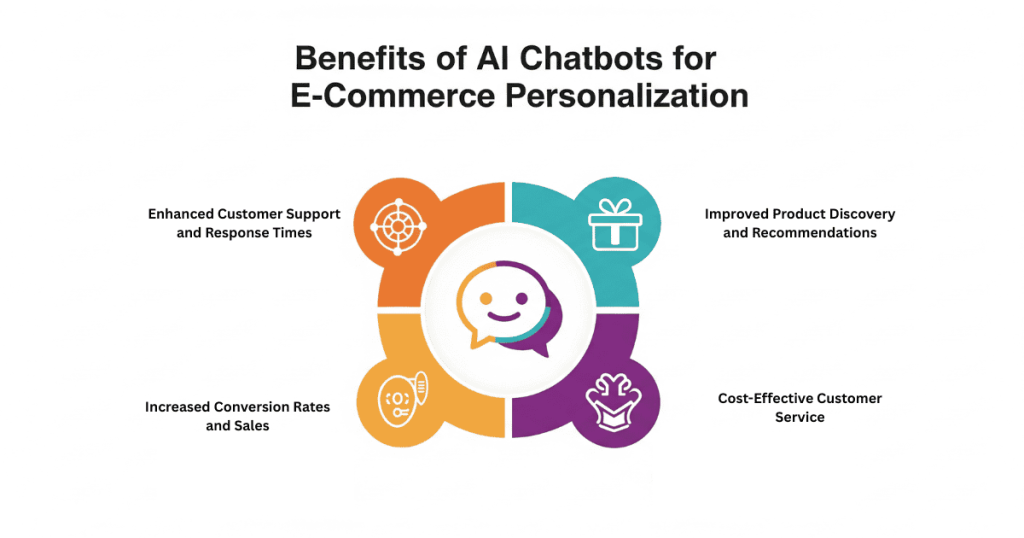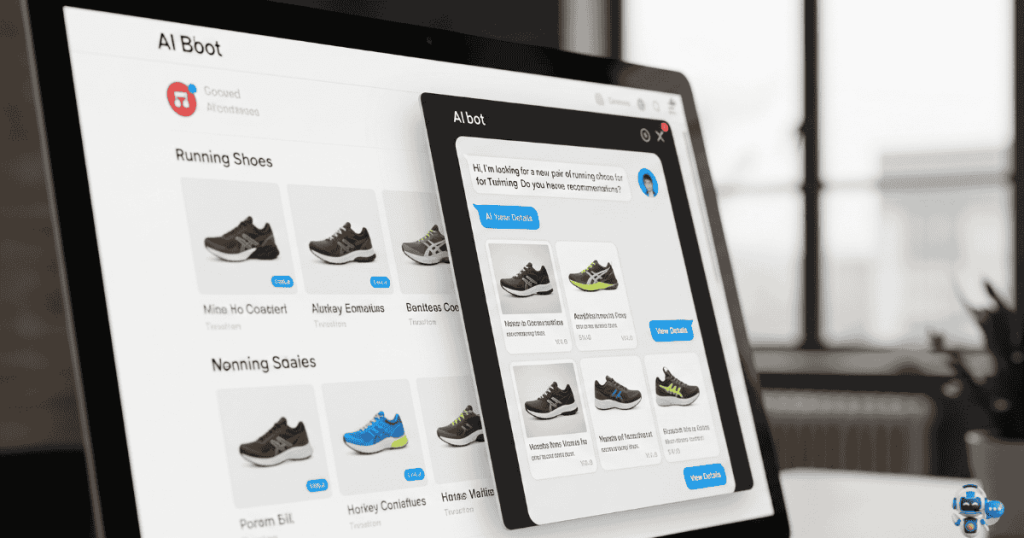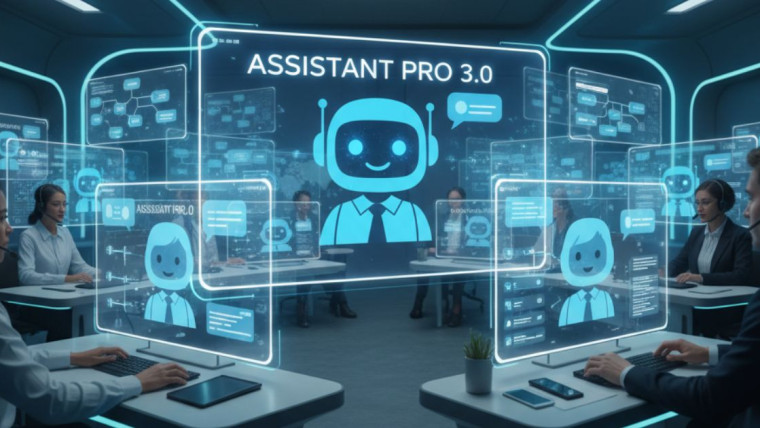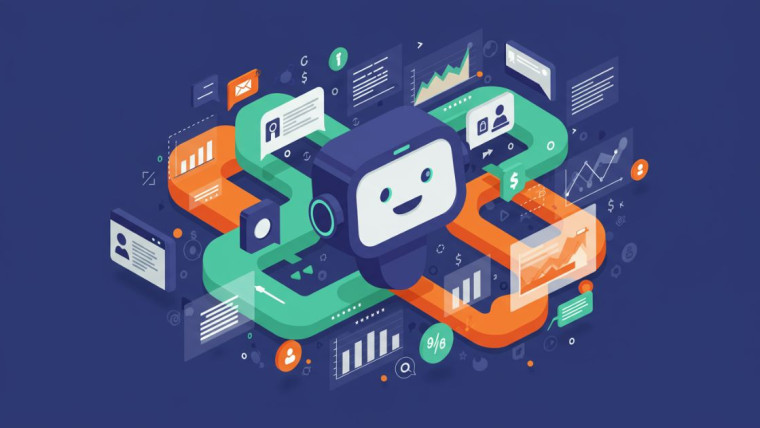The average online shopper abandons their cart 70% of the time. Behind this statistic lies a fundamental challenge: e-commerce businesses struggle to provide the personalized, immediate support that modern consumers expect. While traditional customer service approaches fall short of meeting these demands, AI chatbots are revolutionizing how online retailers create meaningful connections with their customers.
AI chatbots represent more than just automated response systems—they’re sophisticated tools capable of understanding customer behavior, preferences, and intent to deliver truly personalized customer journeys. These intelligent assistants can guide shoppers from initial interest to final purchase, providing relevant recommendations, answering specific questions, and resolving concerns in real-time.
The transformation happens at every touchpoint. When a customer visits your website, an AI chatbot can instantly recognize their browsing patterns and previous interactions to offer tailored product suggestions. During the consideration phase, these systems provide detailed information and comparisons that help customers make confident decisions. Most importantly, they intervene at critical moments—like cart abandonment—with personalized incentives that bring customers back to complete their purchases.
This comprehensive approach to customer engagement is changing the e-commerce landscape, enabling businesses to scale personalized experiences while reducing operational costs and increasing conversion rates.
Understanding AI Chatbots in the E-Commerce Context
AI chatbots in e-commerce are powered by advanced technologies, including natural language processing, machine learning algorithms, and conversational AI for sales. Unlike basic rule-based chatbots that follow predetermined scripts, these intelligent systems learn from each customer interaction to improve their responses and recommendations over time.
The technology behind modern e-commerce chatbots combines several key components. Natural language understanding allows them to interpret customer queries in context, even when questions are phrased differently or contain typos. Machine learning capabilities enable continuous improvement based on successful interactions and customer feedback. Integration with customer data platforms provides access to purchase history, browsing behavior, and preference information that informs personalized responses.
These chatbots operate across multiple channels, from website chat widgets to social media messaging platforms, creating consistent experiences regardless of where customers choose to engage. They can handle complex scenarios, such as processing returns, tracking orders, and providing detailed product specifications, while seamlessly escalating to human agents when situations require personal attention.
Benefits of AI Chatbots for E-Commerce Personalization

The implementation of AI chatbots delivers measurable improvements across key e-commerce metrics. Customer retention with chatbots shows significant enhancement as these systems provide consistent, helpful experiences that keep shoppers engaged with your brand.
Enhanced Customer Support and Response Times
AI chatbots provide instant responses to customer inquiries, eliminating wait times that often lead to abandoned purchases. They’re available 24/7, ensuring international customers receive support regardless of time zones. This immediate availability translates directly into improved customer satisfaction scores and reduced bounce rates.
Improved Product Discovery and Recommendations
Through sophisticated analysis of customer behavior and preferences, AI chatbots excel at product discovery. They can suggest complementary items, highlight relevant promotions, and guide customers toward products that match their specific needs. This automated customer experience creates a shopping environment that feels curated and personal.
Increased Conversion Rates and Sales
Businesses implementing AI chatbots typically see conversion rate improvements of 10-20%. These systems identify potential customers who might be struggling with their purchase decisions and provide targeted assistance. They can offer limited-time discounts, provide social proof through customer reviews, or address specific concerns that might prevent a sale.
Cost-Effective Customer Service
While human customer service representatives handle complex issues excellently, AI chatbots efficiently manage routine inquiries, product questions, and standard support requests. This division of labor allows businesses to provide comprehensive customer support while controlling operational costs.
Implementing Personalized Customer Journeys Through AI
Creating effective personalized customer journeys requires strategic planning and careful implementation. The process begins with mapping your current customer journey to identify key touchpoints where AI chatbots can provide the greatest value.
Data Collection and Customer Profiling
Successful chatbot e-commerce strategies start with comprehensive data collection. This includes tracking customer browsing patterns, purchase history, demographic information, and interaction preferences. AI systems use this data to build detailed customer profiles that inform personalized recommendations and responses.
The key lies in collecting data ethically and transparently while ensuring customers understand the value they receive in exchange for sharing their information. Progressive profiling allows chatbots to gradually build more complete customer pictures through ongoing interactions rather than overwhelming users with lengthy initial questionnaires.
Behavioral Tracking and Analysis
Modern AI chatbots monitor real-time customer behavior to identify intent and provide timely interventions. For example, when a customer spends significant time on a product page without making a purchase, the chatbot might offer additional product information, customer reviews, or a limited-time discount to encourage conversion.
This behavioral analysis extends beyond individual sessions. By understanding patterns across multiple visits, chatbots can recognize returning customers and resume previous conversations or build upon past interactions to provide increasingly relevant assistance.
Dynamic Content Personalization
AI-driven engagement enables dynamic content delivery based on individual customer characteristics and current context. A chatbot might present different product categories to first-time visitors versus returning customers, or adjust its communication style based on customer preferences indicated through previous interactions.
This personalization extends to promotional offers, where chatbots can present discounts and incentives most likely to resonate with specific customer segments. Rather than generic promotional messages, customers receive offers tailored to their interests and purchase likelihood.
Best Practices for AI Chatbot Implementation
Successful AI chatbot deployment requires attention to both technical capabilities and customer experience considerations. The most effective implementations feel natural and helpful rather than intrusive or overly automated.
Choosing the Right Chatbot Platform
Select platforms that integrate seamlessly with your existing e-commerce infrastructure, including inventory management systems, customer databases, and analytics tools. The chosen solution should support your specific use cases while providing room for future expansion and feature enhancement.
Consider factors like customization capabilities, multilingual support, and mobile optimization. Your chatbot platform should align with your brand voice and be capable of handling your expected interaction volumes without performance degradation.
Training and Optimization Strategies
Effective AI chatbots require ongoing training and optimization. Start with comprehensive training data that includes common customer questions, product information, and appropriate response examples. Regularly review chatbot interactions to identify areas for improvement and add new training data based on customer feedback and changing business needs.
Implement A/B testing for different response approaches to determine what resonates best with your customer base. Monitor key performance metrics, including customer satisfaction scores, conversion rates, and escalation rates to human agents.
Integration with Existing Systems
Seamless integration with your e-commerce platform, CRM system, and inventory management tools ensures chatbots have access to real-time information needed to provide accurate, helpful responses. This integration enables features like order tracking, inventory availability checks, and personalized product recommendations based on purchase history.
API connections allow chatbots to perform actions on behalf of customers, such as processing returns, updating account information, or scheduling delivery appointments. These capabilities transform chatbots from information providers into functional business tools.
Advanced Strategies and Future Trends
The evolution of AI technology continues to expand possibilities for e-commerce personalization. Voice-enabled shopping through smart speakers represents a growing opportunity for conversational commerce. AI chatbots are adapting to support voice interactions, enabling customers to browse products, ask questions, and make purchases through natural speech.
Omnichannel Chatbot Experiences
Advanced implementations create consistent chatbot experiences across all customer touchpoints, from websites and mobile apps to social media platforms and email communications. Customers can start conversations on one channel and seamlessly continue them on another without losing context or repeating information.
Predictive Analytics and Proactive Engagement
Future AI chatbots will leverage predictive analytics to anticipate customer needs before they’re explicitly expressed. These systems might proactively suggest reorders for consumable products, recommend seasonal items, or provide maintenance reminders for durable goods.
Enhanced Emotional Intelligence
Emerging technologies enable chatbots to better understand and respond to customer emotions. Sentiment analysis allows these systems to adjust their communication style and escalation protocols based on customer frustration levels or satisfaction indicators.
Measuring Success and ROI
Comprehensive measurement strategies help businesses understand the impact of their AI chatbot investments and identify opportunities for optimization.
Key Performance Indicators
Track metrics including customer satisfaction scores, first-contact resolution rates, average response times, and conversion rates for chatbot-assisted interactions. Monitor both quantitative measures and qualitative feedback to build a complete picture of chatbot performance.
Customer Feedback and Continuous Improvement
Implement feedback collection mechanisms that allow customers to rate their chatbot experiences and provide specific suggestions for improvement. Regular analysis of this feedback drives iterative enhancements that keep chatbot capabilities aligned with customer expectations.
Cost-Benefit Analysis
Calculate the full ROI of AI chatbot implementation by comparing operational cost savings against implementation and maintenance expenses. Include factors like reduced customer service staff requirements, increased sales conversions, and improved customer retention rates.
Transforming E-Commerce Through Intelligent Automation

AI chatbots represent a fundamental shift in how e-commerce businesses approach customer engagement and personalization. These intelligent systems enable companies to provide individualized experiences at scale, creating competitive advantages that translate directly into improved customer satisfaction and business performance.
The businesses that succeed with AI chatbot implementation focus on creating genuine value for their customers rather than simply automating existing processes. They use these tools to enhance human capabilities, provide better customer experiences, and build stronger relationships with their audience.
Start your AI chatbot journey by identifying specific customer journey touchpoints where personalized assistance would provide the greatest value. Choose a platform that aligns with your technical requirements and business goals, then implement gradually while continuously monitoring performance and customer feedback.








The Future of AI Chatbots in Customer Experience: What’s Next?
How Chatbot Analytics Evolved from Basic Metrics to AI-Powered Insights
How Chatbots Are Reshaping the Future of Online Education
AI Chatbots in Healthcare: Transforming Patient Support and Engagement